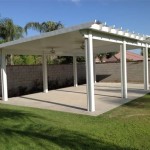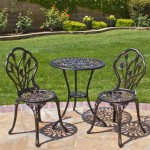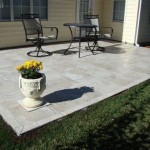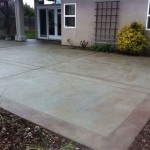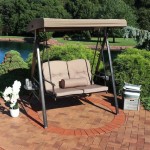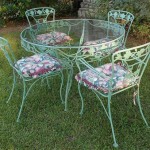Patio Set Covers: Enjoy Protection and Comfort of Outdoor Toys
Patio furniture represents a significant investment for enhancing outdoor living spaces. Protecting these investments from the elements is crucial for extending their lifespan and maintaining their aesthetic appeal. Patio set covers serve as a primary defense against a range of environmental factors, including rain, snow, sun, wind, and debris. Moreover, these covers can also be utilized to protect outdoor toys, ensuring they remain clean, dry, and ready for use. The selection and proper use of patio set covers are essential for preserving the value and functionality of outdoor furniture and recreational equipment.
The market offers a diverse array of patio set covers, varying in materials, sizes, and features. Understanding the characteristics of different cover types allows consumers to make informed decisions that align with their specific needs and environmental conditions. Considerations such as material durability, water resistance, breathability, and ease of use play a vital role in determining the effectiveness of a patio set cover.
Beyond their protective function, patio set covers contribute to the overall convenience of outdoor living. By shielding furniture from the elements, they minimize the need for frequent cleaning and reduce the risk of damage that can lead to costly repairs or replacements. This translates to more time spent enjoying outdoor spaces and less time dedicated to maintenance tasks. The proper use of covers also extends to protecting children's outdoor toys, ensuring they are safe from weather-related damage and ready for playtime.
Material Selection: Durability and Weather Resistance
The material composition of a patio set cover is the most important factor influencing its performance. Different materials offer varying degrees of protection against weather elements, UV radiation, and physical wear and tear. The following are some common materials used in patio set covers:
Polyester: Polyester is a synthetic fabric known for its strength, durability, and water resistance. Polyester covers are often treated with a water-repellent coating to enhance their ability to shed moisture. They are also relatively lightweight and easy to handle. However, polyester may not be as breathable as some other materials, potentially leading to moisture buildup under the cover in humid conditions.
Vinyl: Vinyl is a waterproof and highly durable material that provides excellent protection against rain, snow, and wind. Vinyl covers are typically more resistant to tearing and abrasion than polyester covers. However, vinyl is not breathable, which can trap moisture underneath the cover and potentially lead to mold or mildew growth. This risk can be mitigated by choosing covers with ventilation features or by periodically removing the cover to allow for airflow.
Canvas: Canvas is a natural fabric that is known for its durability and breathability. Canvas covers are typically treated with a water-repellent coating to provide some degree of water resistance. They are also resistant to tearing and abrasion. However, canvas is not as waterproof as vinyl or polyester, and it may require occasional re-treating with a water-repellent spray to maintain its effectiveness. Canvas covers tend to be heavier and more expensive than covers made from synthetic materials.
Polyethylene: Polyethylene is a cost-effective and lightweight material that offers basic protection against the elements. Polyethylene covers are typically waterproof and resistant to tearing. However, they are not as durable as other materials, such as polyester or vinyl, and they may degrade more quickly when exposed to sunlight. Polyethylene covers are often used for temporary or seasonal protection.
When selecting a material, consideration should be given to the local climate and the level of protection required. In areas with heavy rainfall or snowfall, a waterproof material such as vinyl is essential. In areas with high humidity, a breathable material such as canvas or a polyester cover with ventilation features is preferable. For areas with intense sunlight, a UV-resistant material is crucial to prevent fading and degradation of the cover.
The denier of the fabric should also be considered. Denier refers to the thickness of the individual threads that make up the fabric. A higher denier indicates a thicker, more durable fabric. For patio set covers, a denier of at least 300 is recommended.
Size and Fit: Ensuring Adequate Coverage
Selecting the correct size and fit of a patio set cover is crucial for ensuring optimal protection. A cover that is too small will not adequately protect the furniture, leaving exposed areas vulnerable to the elements. A cover that is too large will be loose and baggy, allowing wind to blow it around and potentially cause damage.
To determine the appropriate size, carefully measure the dimensions of the patio furniture set, including the length, width, and height. It is important to measure the furniture with any cushions or accessories in place. Add a few extra inches to each dimension to allow for ease of installation and removal of the cover. If the furniture set has irregular shapes or angles, it may be necessary to select a custom-fitted cover to ensure a snug and secure fit.
Many patio set covers come with adjustable straps, buckles, or drawstrings that can be used to secure the cover to the furniture. These features help to prevent the cover from being blown off by the wind and also ensure a more tailored fit. Look for covers with reinforced corners and seams, as these areas are more susceptible to wear and tear. Covers for outdoor toys should also be appropriately sized, ensuring complete coverage with secure fastenings to prevent slippage during windy conditions.
When covering outdoor toys, it is important to consider the toy's dimensions and shape. For example, a large playhouse will require a larger, more durable cover than a small sandbox. Ensure that the cover is securely fastened to the toy to prevent it from being blown away or allowing water to seep underneath.
Proper Usage and Maintenance: Extending Cover Lifespan
Even the highest-quality patio set cover will not provide adequate protection if it is not used and maintained properly. Following these guidelines will help to extend the lifespan of the cover and ensure its effectiveness:
Cleaning: Regularly clean the patio set cover to remove dirt, dust, and debris. Use a soft brush or cloth and a mild soap solution to gently scrub the surface of the cover. Rinse thoroughly with water and allow the cover to air dry completely before storing it. Avoid using harsh chemicals or abrasive cleaners, as these can damage the material.
Storage: When the cover is not in use, store it in a clean, dry place. Fold the cover neatly and place it in a storage bag or container to protect it from dust and moisture. Do not store the cover in direct sunlight, as this can cause fading and degradation of the material. Storing toy covers when not in use is also crucial to prevent damage and ensure longevity.
Ventilation: If the patio set cover is not breathable, periodically remove it to allow for airflow. This will help to prevent moisture buildup underneath the cover and reduce the risk of mold or mildew growth. In humid climates, it is particularly important to remove the cover on a regular basis to allow the furniture to air out.
Repairs: Inspect the patio set cover regularly for any signs of damage, such as tears, rips, or holes. Repair any damage promptly to prevent it from worsening. Small tears can often be repaired with fabric glue or a patch. Larger tears may require professional repair or replacement of the cover.
Winterization: In areas with harsh winters, it is important to take extra precautions to protect patio furniture and outdoor toys from the elements. Before covering the furniture, clean it thoroughly and allow it to dry completely. Consider using additional protection, such as foam padding or blankets, to cushion the furniture against snow and ice. Remove any cushions or accessories that are not weather-resistant and store them indoors.
By following these guidelines, consumers can ensure that their patio set covers provide long-lasting protection for their outdoor furniture and toys. Regular cleaning, proper storage, and prompt repairs will help to extend the lifespan of the cover and maintain its effectiveness.
Furthermore selecting the correct type of cover based on the material of the patio set is important. For example, wooden furniture needs to breathe more than metal furniture to prevent rot. Proper patio set covers extend the life of not only the furniture, but ensure outdoor toys are ready for use whenever the weather permits.

Rattan Patio Sofa Set 4 Pieces Outdoor Sectional Furniture All Weather Pe Wicker Conversation Cushioned With Glass Table Storage Box For Garden Poolside Deck Com

Better Homes Gardens Bellamy 2 Piece Outdoor Sofa Gray Cushions Coffee Table Set With Patio Cover Com

Better Homes Gardens River Oaks 3 Piece Sofa Nesting Table Set With Patio Cover Com

Xizzi Sunrise Rattan Outdoor Sectional With Blue Cushion S And Steel Frame In The Patio Sectionals Sofas Department At Com

Better Homes Gardens Bellamy 2 Piece Outdoor Sofa Gray Cushions Coffee Table Set With Patio Cover Com

Aecojoy 7 Piece Patio Conversation Set Outdoor Sectional Sofa Rattan Wicker Dining Furniture Gray Com

Rattan Patio Sofa Set 4 Pieces Outdoor Sectional Furniture All Weather Pe Wicker Conversation Cushioned With Glass Table Storage Box For Garden Poolside Deck Com

How To Care For Outdoor Furniture A Complete Guide Crate Barrel

8pc Outdoor Dining Set With Metal Slat Top Table Umbrella Hole Swivel Chairs Gray Beige Captiva Designs Target
Related Posts

